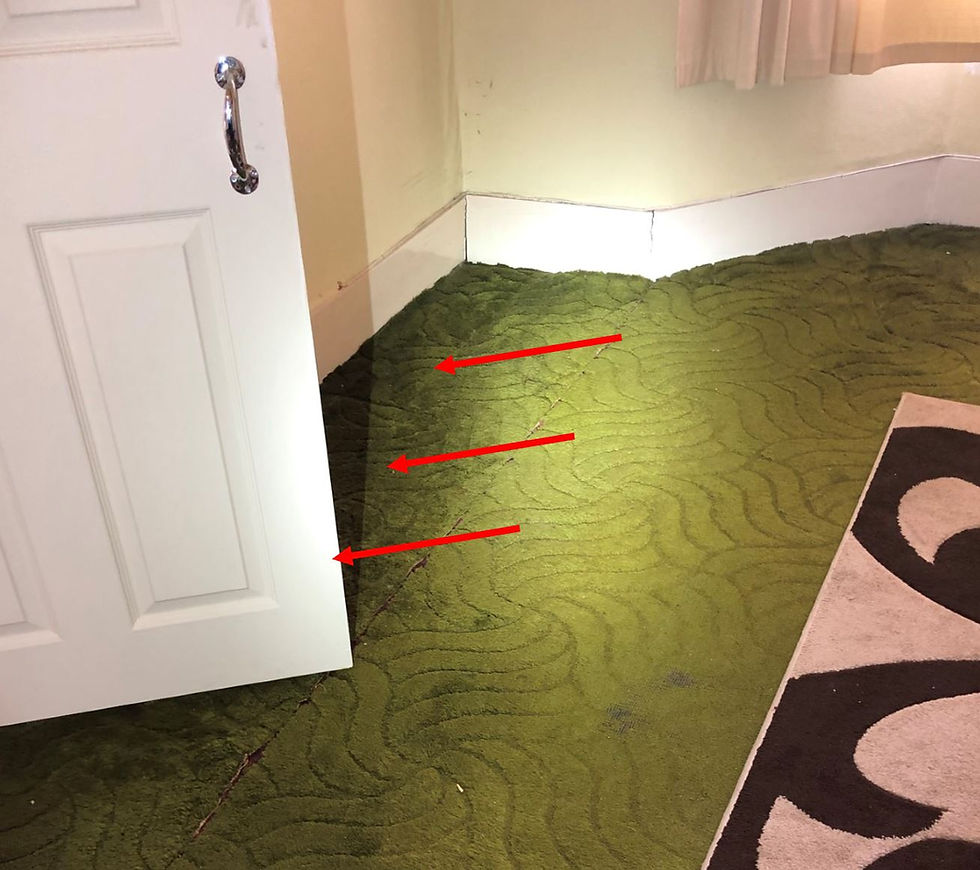
In this post we will look at a full structural survey in detail. We share a real life example structural survey that we, ZFN Chartered Surveyors, undertook on a 1900s Victorian period terraced house.
So what does a full structural survey actually mean?
Well, sometimes the name of this type of survey can cause confusion. A full structural survey looks at the structure of a property in detail and is usually a non-intrusive, visual check of the building. Building Surveyors usually rely on their expertise to inspect, detect and diagnose structural issues with a building. The key point to note here is that a full structural survey to a residential property is nearly always non-intrusive and non-destructive. This means that walls, floors and ceilings are not opened up to inspect any particular structural element, but moreover; a visual inspection is undertaken.
We are often asked by clients to undertake full structural surveys of Victorian properties that they are thinking about buying. Victorian properties are highly sought after due to their rich inherited character, ornate stonework and decorative finishes.
We discuss a real life example below...
Full Structural Survey Case Study

When we undertook a full structural survey to this Victorian property, we immediately realised that this property was extremely dated, for example; there was no boiler nor any central heating! Whilst this may put some buyers off; we feel that with the right tender loving care, a property like this can be revived to a decent condition whilst earning the home buyer a saving.
A dated Victorian property always peaks our interest. We get to uncover original Victorian design intent through lath and plaster walls, large lamb's tongue pine skirting boards, panelled hardwood doors, chimney breasts, fireplaces and chimney stacks (The brick chimney was a prominent feature in Victorian homes; comprising of a fireplace, chimney breast and chimney stack that protruded above the roof line to exhaust smoke.). We are also fans of intricate and ornate cornicing; like this property had (albeit marred with a structural crack).

What about that structural wall crack?
When undertaking a full structural survey, we are always on the look out for cracks.
Cracks come in all shapes and sizes and as RICS chartered building surveyors; we try our best to understand them. It is quite common for cracks to appear in walls owing to natural settlement of the property or shrinkage within plaster. The key thing here is to make sure that the cracks are not progressive and if they are; it may indicate that something underlying is going on structurally. On a side note, a full structural survey is merely a snapshot of a property at a given date and time. Most Victorian era properties have reached their 100 year birthday. It is therefore the surveyor's expertise which really counts when trying to decipher structural cracks and related issues in historic properties.
So what's the crack? (no pun intended)
So that crack got us thinking. Is it a natural settlement crack or a progressive crack? Did a underlying structural defect cause this crack to appear or is it just commensurate and expected of this type of property which is over 100 years old?
And so we dug deeper...

This floor appeared to slope quite heavily near the crack we saw earlier on the wall. This got us thinking more about the structure and what may be causing the floor to slope and a high level wall crack in and around the same area.
When undertaking full structural surveys, suspended timber floors (a suspended timber floor usually is made up of timber joists that span between brick walls which the floorboards are laid on top of) give us a vital insight if a property has moved (settled) historically. Whilst some movement is acceptable, a sharp incline in a timber floor may require further investigation.
So was there a structural problem?
In an attempt to uncover more, we decided to enter the cellar, so we could look at the underside of the suspended timber floor joists...

What a surprise! We were not expecting to become soiled with coal residue but the sight of a coal mound next to a historic coal chute did make us ponder for a while on how the Victorians utilised coal and chimneys to heat up their homes back then!
Navigating through the historic coal, we found what we were looking for...

A defective brick pier! It was common for Victorian-period properties to have brick sleeper walls within the subfloor. These brick structures would act as a structural load bearing element supporting the timber suspended floor joists above.
This particular one appeared to suffer from structural deflection.
Puzzle solved; and justification for the client to opt for a full structural survey!
We hope this post highlights the thought process a surveyor has to go through when undertaking a full structural survey. Whilst we were lucky that there was access to the cellar within this Victorian Terraced House, there are times where we simply do not get sight of the issue hand. This is where surveying experience and skills come into play! Read more about our Structural Survey Services
ZFN Chartered Surveyors are fully regulated by the Royal Institute of Chartered Surveyors (RICS). If you are interested in any of services then feel free to contact us on 0207 862 6363.

Comments